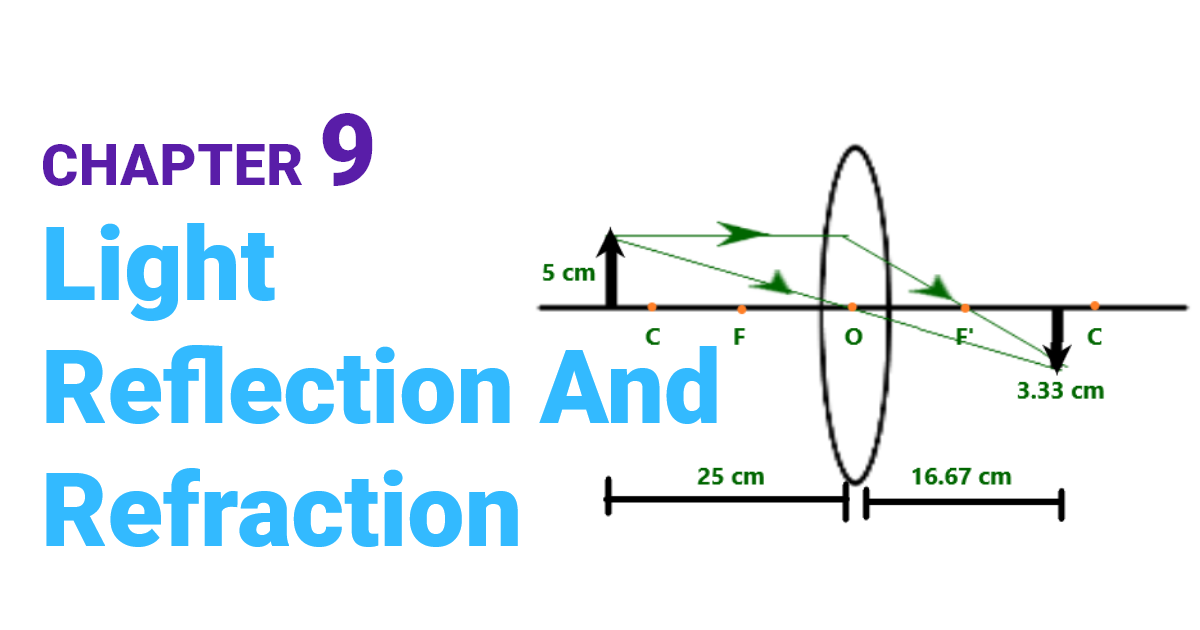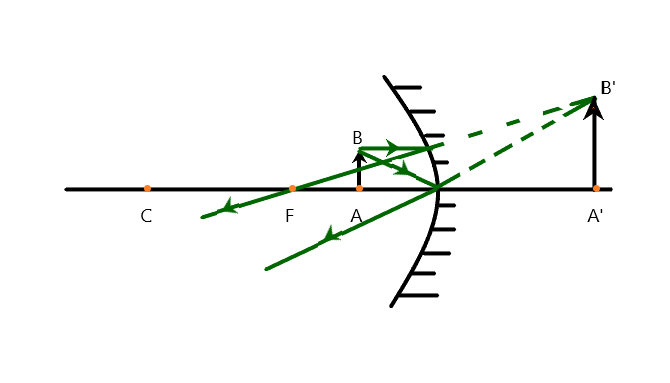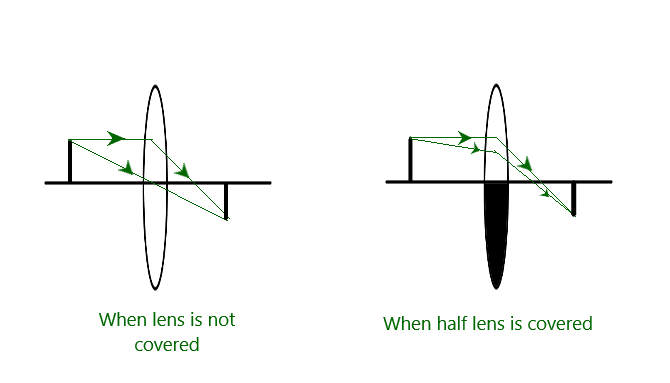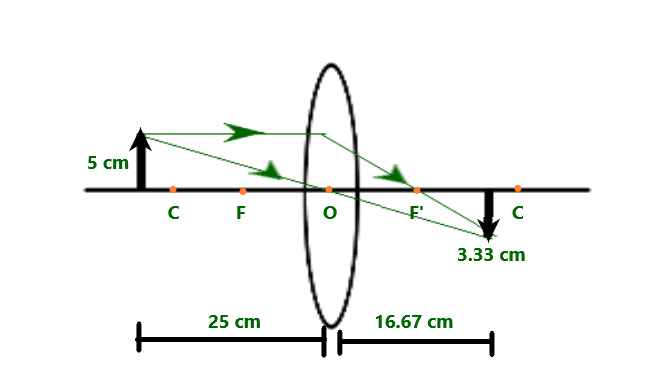NCERT Solutions for Class 10 Light Reflection and Refraction: In this article, you can find the Light Refraction Class 10 NCERT Solutions. Studying the Light Chapter of Class 10 NCERT Solution will help you to build a solid basis in Physics. Knowing the questions and answers of Light Refraction Class 10 will help Class 10 students score well in Class 10 board exams.
In addition to NCERT solutions for class 10 science chapter 10 light refraction and refraction, Students can find light refraction and class 10 numerical questions here. Going through these questions will help students understand how to solve the problems which will in turn help them to solve the problems in the best possible way. So don’t wait any longer, read on to know everything about light refraction and science class 10 important questions with answers here.

NCERT Solutions for Class 10 Light Reflection and Refraction
Before going into the details of the NCERT solutions for class 10 science chapter 10 light refraction and refraction, let us have a brief overview of the topics and sub-topics under the NCERT science book activities for class 10 chapter 10.
- Light – Reflection & Refraction
- Reflection Of Light
- Spherical Mirrors Refraction Of Light
Maths Important Questions for Class 10 NCERT (PDF)
Best Notes Making Format, Ideas And Examples 2023
Human Eye and Colourful World Class 10 NCERT Rationalised Solution 2024
NCERT Solutions for Class 10 Light Reflection and Refraction Textbook Question
Q1. Which one of the following materials cannot be used to make a lens?
(a) Water
(b) Glass
(c) Plastic
(d) Clay
Answer: (d) Clay
We can’t make clay lenses because clay is opaque and light can’t pass through it. That’s why you can’t see with a clay lens.
Q2. The image formed by a concave mirror is observed to be virtual, erect and larger than the object. Where should be the position of the object?
(a) Between the principal focus and the centre of curvature
(b) At the centre of curvature
(c) Beyond the centre of curvature
(d) Between the pole of the mirror and its principal focus.
Answer: (d) Between the pole of the mirror and its principal focus.
When the object is positioned between the main focus and the pole of the reflection mirror, the concave image creates a virtual, straight and larger image.
Q3. Where should an object be placed in front of a convex lens to get a real image of the size of the object?
(a) At the principal focus of the lens
(b) At twice the focal length
(c) At infinity
(d) Between the optical centre of the lens and its principal focus.
Answer: (b) At twice the focal length
To get a real image of the object through a convex lens, we need to place the object at a distance equal to the radius of curvature of the lens which is twice the focal length.
Q4. A spherical mirror and a thin spherical lens have a focal length of -15 cm. The mirror and the lens are likely to be
(a) both concave
(b) both convex
(c) the mirror is concave, and the lens is convex
(d) the mirror is convex, but the lens is concave
Answer:
The focal length given here is negative. Negative focal length is a property of a concave mirror. Thus the mirror and lens both are concave.
Q5. No matter how far you stand from a mirror, your image appears erect. The mirror is likely to be
(a) plane
(b) concave
(c) convex
(d) either plane or convex.
Answer:
A plane mirror is always straight, while a convex mirror is curved. Therefore, the mirror is most likely to be a plane or a convex mirror.
Q6. Which of the following lenses would you prefer to use while reading small letters found in a dictionary?
(a) A convex lens of focal length 50 cm
(b) A concave lens of focal length 50 cm
(c) A convex lens of focal length 5 cm
(d) A concave lens of focal length 5 cm
Answer:
A shorter focal length means that the magnification power of the mirror is higher. A convex lens produces an “upright” image when the subject is between the focal length and the focal length of the mirror. So, let’s use a 5cm convex mirror.
Q7. We wish to obtain an erect image of an object, using a concave mirror of focal length 15 cm. What should be the range of distance of the object from the mirror? What is the nature of the image? Is the image larger or smaller than the object? Draw a ray diagram to show the image formation in this case.
Answer:
In a concave mirror, when the object is less than the focal length of the mirror, it will create an erect image. So, let’s place the object between 0 and 15 cm. Then, the image will be virtual, erect and magnified (larger than the object) as shown in the ray diagram below.

Q8. Name the type of mirror used in the following situations.
(a) Headlights of a car
(b) Side/rear-view mirror of a vehicle
(c) Solar furnace
Support your answer with a reason.
Answer:
(a) The main reason for using a concave mirror in your car’s headlights is that when you place the light source at the center of the concave reflector, it creates a strong parallel beam of light that helps you see the items on the front of your car clearly to a great distance.
(b) The side/rearview mirror of a vehicle is a convex mirror because we need to see a large amount of area and vehicles behind us while driving. A convex mirror is used because a convex mirror forms a virtual and diminished image of the objects which provides us with a smaller view of the large area.
(c) Solar furnace makes use of concave mirror because the sun’s rays coming from infinity are converged by the concave mirror at its focus which concentrates the energy at a particular point to produce a high temperature.
Q9. One-half of a convex lens is covered with black paper. Will this lens produce a complete image of the object? Verify your answer experimentally. Explain your observations.
Answer:
The lens will produce a full image of the object, but the intensity of the image will be decreased. This is because we only need two rays of light to form an image of an object. Since the top part of the lens isn’t covered, it is possible for at least two rays to pass through the top of the lens and create an image.
To test if a half lens can create a full image of an object, we can perform an experiment. To do this, we will need a convex lens, a candle, a matchstick, two black sheets of paper and a table.
Procedure:

- Fix the convex lens on the table.
- Now light a candle with a matchstick and place it on one side of the lens.
- Turn off the lights to ensure that the room is dark
- Take a sheet of paper and obtain the image of the candle on the sheet by moving it.
- Mark the positions of the candle, lens and image in this case.
- Now, cover one-half of the lens with a black sheet.
- Repeat the above experiment.
Q10. An object 5 cm in length is held 25 cm away from a converging lens of focal length 10 cm. Draw the ray diagram and find the position, size and nature of the image formed.
Answer:
Given u = -25 cm, h = 5cm, f = 10 cm, h’ = ?
Using lens formula: 1/f = 1/v – 1/u
1/10 = 1/v – (-1/25)
1/v = 1/10 – 1/25
1/v = 15/250 = 3/50
v = 50/3 cm = 16.67 cm
We know that h/h’ = v/u
5/h’ = 50/3*(-25)
h’ = 250/(-75) = -10/3
h’ = 3.33 cm
The negative sign indicates that the image is inverted and diminished in size as h’ < h. It is formed at a distance of 16.67 cm behind the lens.
The ray diagram is shown below:

Q11. A concave lens of focal length 15 cm forms an image 10 cm from the lens. How far is the object placed from the lens? Draw the ray diagram.
Given u = ?, f = -15 cm, v = -10 cm
Using lens formula:
1/f = 1/v – 1/u
-1/15 = -1/10 – 1/u
1/u = -1/10 + 1/15
1/u = -5/150
u = -30 cm
Thus, the object is placed at a distance of 30 cm in front of the lens.
The ray diagram is shown below:

Q12. An object is placed at a distance of 10 cm from a convex mirror of focal length 15 cm. Find the position and nature of the image.
Given u = -10 cm, f = 15 cm
Using mirror formula : 1/f = 1/v + 1/u
1/15 = 1/v + (-1/10)
1/v = 1/15 + 1/10
1/v = 25/250
v = 6 cm
Magnification = -v/u = -6/-10 = 0.6 < 1
Q13. The magnification produced by a plane mirror is +1. What does this mean?
For example, magnification = h/h. If magnification is 1, then the height of the image is equal to the height of the object. If magnification is positive, then the image is real and straight.
Q14. An object of 5 cm is placed at a distance of 20 cm in front of a convex mirror of a radius of curvature 30 cm. Find the position, nature and size of the image.
Given h = 5 cm, u = -20 cm, R = 30 cm
As R = 2f
30 = 2f
f = 15 cm
Using mirror formula:
1/f = 1/v + 1/u
1/15 = 1/v – 1/20
1/v = 1/15 + 1/20
1/v = 35/300
v = 300/35 = 8.57 cm
Magnification:-
m= -v/u = -8.57/-20 = 0.428
m = h’/h
0.428 = h’/5
h’ = 2.14 cm
As m < 1, v is positive and h’ < h, a virtual , erect and diminished image of size 2.14 cm is formed.
Q15. An object of size 7.0 cm is placed at 27 cm in front of a concave mirror of a focal length of 18 cm. At what distance from the mirror should a screen be placed so that a sharply focused image can be obtained? Find the size and nature of the image.
Given h = 7, u = -27 cm, f = -18 cm, v = ?
Using mirror formula:
1/f = 1/v + 1/u
-1/18 = 1/v – 1/27
1/v = -1/18 + 1/27
1/v = -1/54
v = -54 cm
Magnification m= -v/u = 54/-27 = -2
As m > 1 and has a negative sign, a real, inverted and magnified image of double the size of the object is formed at a distance of 54 cm in front of the mirror.
Q16. Find the focal length of a lens of power -2.0 D. What type of lens is this?
Given P = -2.0 D
We know that 1/f = P
1/f = -2
f = -1/2 = -0.5
m = -50cm
Q17. A doctor has prescribed a corrective lens of power +1.5 D. Find the focal length of the lens. Is the prescribed lens diverging or converging?
Given P = 1.5 D
We know that 1/f = P
1/f = 1.5
f = 1/1.5 = 0.667m
Thus the focal length is 0.667 m. As the focal length is positive, it is a convex lens which is a converging lens.
